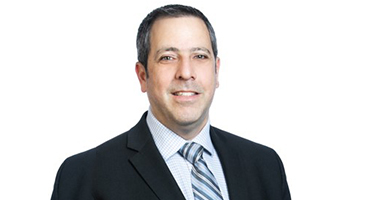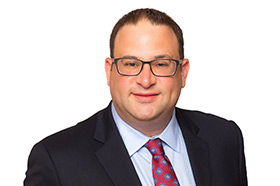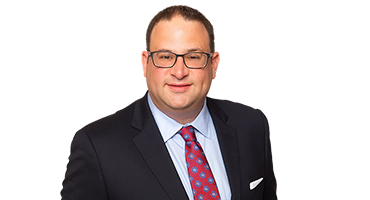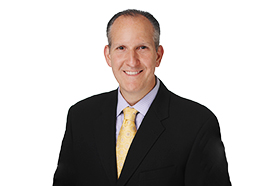Add-ons to existing platforms should keep transaction volume vigorous
The year 2022 remained an active one for M&A activity in the healthcare industry, following a record-setting year for healthcare deals in 2021. For North America, the 1,868 healthcare deals in 2022 and their associated deal value of $278.3 billion represented a decrease of 29.48% and 41.77% respectively. But 2021 was unusually active, with 2022 representing a return to more normal levels, according to PitchBook’s 2022 Annual Global M&A Report.
The U.S. healthcare system has a reputation of being less cost-efficient than those of other countries, and industry leaders are seeking ways to deliver the highest quality of care while lowering costs. As such, private equity (PE) is fueling M&A trends in healthcare, building service offerings outside of hospital settings. Focused investments in lower cost, more convenient and higher quality care in outpatient service settings are creating investment opportunities for PE. This commitment to invest in ambulatory service centers, urgent care centers and various home settings, as well as related administrative service organizations in health care, is likely to drive a trend for sustained transaction volume in 2023.
24:45 | Transcript
"Healthcare entities often have patient data throughout both organizations that needs to be combined into a complete set of patient records that is complete and secure."
Current trends and strategies
Predictions for 2023
PE investors will continue to focus on building out existing platforms over the next year with smaller add-on practices that remain challenged with the complexities to manage operations; these practices also seek to transact, allowing PE investors to build out larger platforms. Investors will continue to evaluate their back-office and operating infrastructure as well as contracting models, with payers having a high level of influence on how the PE platforms focus on efficiencies and growth in 2023. Of particular note, value-based care is back at the forefront of the industry, offering providers and payers the opportunity to share in implementing risk-taking models and realizing the benefits in shared savings.
Healthcare industry M&A activity has proven to be relatively insulated from general economic trends and concerns about a recession. Inelastic demand and a stable third-party payer system support strong revenues for outpatient services. For these reasons, investors may view the healthcare sector more attractively than in past years.
Ultimately, deals will get done in 2023, but larger deals with valuations over half a billion dollars will be harder to consummate until interest rates, or seller valuation expectations, start to decline. Moreover, more funding could flow into the private sector driven by public market uncertainty. This will drive up PE fundraising which, in turn, will likely offset hindrances from rising interest rates.
Mergers are not the only way cost savings can be achieved. For a variety of reasons — including regulatory requirements, government oversight and the adoption of best practices — running the non-medical operations of a healthcare business has resulted in a high degree of standardization. For this reason, many practices that want to remain independent and not be part of a larger medical platform or system resort to affiliation agreements with larger medical groups through a medical services organization (MSO) structure as a means to leverage the benefit in back-office investments.
Getting the investment to fit the situation
Healthcare PE investors generally fall into two groups: a core group that invests in providing services such as physician practice management that takes on reimbursement risk, and those that invest in more peripheral healthcare service companies that are not directly exposed to the reimbursement risks.
Right now, PE investors are seeking tuck-ins to existing platform investments. They may not be looking to create new platforms. This is partly spurred by the need to deploy available capital raised by PE. Of the available capital, PE raised fresh capital of $343.1 billion in 2022, according to PitchBook’s Annual U.S. PE Breakdown, and much of which will need to be deployed in the next 24 months.
The recent downturn in public markets and interest rate increases by the Federal Reserve to keep inflation in check both are concerns for healthcare companies considering a public exit, which is putting more focus on PE exits. Additionally, due to investment time horizons and the increased attractiveness of private deals, sellers and buyers may need to adjust to a new equilibrium of lower valuations or lower returns, respectively.
There are new impediments to a successful transaction. The recent inflationary environment combined with the war for talent has driven up operating costs, and in particular, labor cost. This has spurred investment is staffing companies, traveling nurse businesses, staff optimization and scheduling tools as well as remote access to skilled providers from remote locations.
One of the most important external factors that typically inhibits deals are the headwinds on reimbursement rates by CMS, which can dissuade investing in providers with a high percentage of patients covered by Medicare or Medicaid. Even when the financial dynamics work, there are potential impediments to M&A in the form of organizational culture and integration of operations. These factors make the integration of functions and staff more difficult, and thus achieving desired cost savings from the reduction of duplicative support services, less effective.
Get the M&A outlook for other key industries
ARTICLE
ARTICLE
Factors in the equations
Influences driving deal dynamics
The healthcare sector is unique with more influences driving deal dynamics. Some of these key influences include utilization management, payer contracting, cost containment and operating models.
A priority issue providers are facing is the overburdening of clinicians and staff with providing care. This year, healthcare operators will need to prioritize clinicians to practice at their maximum potential, which means relieving them of as much of their administrative burdens as possible so they can spend more time doing what they do best — providing patient care.
Access, choice and cost containment are driving patient and provider behavior. Technology and value-based care models are two major influences on the provision and access to healthcare today. We see investors focusing on these two sub-sectors to capitalize on patient behavior trends and how providers are attempting to share risk and contain costs while continuing to provide quality service.
A focus on returns may be seen as the primary driver of PE investing in healthcare, which has made it a media target of crudely stated accusations of “putting profits over people.” While PE is focused on driving profitability, investors generally achieve that by leveraging industry-leading operators to help generate the best health outcomes in a cost-efficient manner (e.g., creating scale to negotiate better contracting terms).
Evaluating any type of transaction, whether you are a buyer or a seller, requires an appropriate level of assessment of the organization covering, operations, technology, finance, tax and human capital of the businesses involved to avoid post-closing surprises. Finding the right deal isn’t only defined by potential financial outcomes but by discovering other businesses’ red flags — billing irregularities, lawsuits or regulatory non-compliance. Sometimes the best deal is no deal. In any transactional environment, the use of outside advisors can prove invaluable to gain the confidence necessary for a business’ success and stability in order to consummate a transaction.
Contacts:



Lance Beder
Principal, Transaction Advisory Services, Diligence Healthcare
Grant Thornton Advisors LLC
Lance is a Principal in our Transaction Services practice and is the health care transaction services leader with over 20 years of experience in restructuring, M&A, audit and management consulting developed over several years within large professional service settings.
Stamford, Connecticut
Industries
- Healthcare
- Private equity
Service Experience
- Audit & Assurance
- Restructuring and turnaround
- Transaction advisory



Glenn Barenbaum
Principal, Transaction Advisory Services, Diligence Healthcare
Grant Thornton Advisors LLC
Glenn is the Healthcare and Life Sciences Diligence Co-Leader of Grant Thornton’s Strategy & Transactions practice.
Philadelphia, Pennsylvania
Industries
- Healthcare
- Life sciences
Service Experience
- Advisory



Stephen Thome
Principal, Transaction Advisory Services
Grant Thornton Advisors LLC
Stephen is a principal within Grant Thornton’s National Health Care Advisory. He serves as the Health Care Advisory leader for the Great Lakes and as Key Account Leader for various academic health systems.
Cleveland, Ohio
Industries
- Healthcare
Service Experience
- Advisory



Lisa Walkush
Principal, Grant Thornton Advisors LLC
Lisa Walkush is a principal at Grant Thornton Advisors LLC. She boasts significant experience in enterprise-program management, customer-relationship management and operational excellence, as well as compliance, validation and technology-consulting services.
Philadelphia, Pennsylvania
Industries
- Asset management
- Banking
- Energy
- Healthcare
- Hospitality & Restaurants
- Insurance
- Life sciences
- Manufacturing, Transportation & Distribution
- Media & entertainment
- Not-for-profit & higher education
- Private equity
- Services
- Construction & real estate
- Retail & consumer brands
- Technology, media & telecommunications
- Transportation & distribution
Service Experience
- Advisory



Sonny D. Origitano
Managing Director, Transaction Advisory Services
Grant Thornton Advisors LLC
Sonny has extensive experience in pre-close and post-close integration and separation strategy and execution including; one-time cost identification, stand-alone financial and operating models, synergy identification, stranded-costs reduction, transition service agreements (TSA’s), day 1 readiness and contract analysis to maximize or preserve value throughout the transaction life cycle.
Chicago, Illinois
Industries
- Healthcare
- Manufacturing, Transportation & Distribution
- Transportation & distribution
- Retail & consumer brands
- Private equity
Get the M&A outlook for other key industries
Our healthcare featured industry insights

No Results Found. Please search again using different keywords and/or filters.





